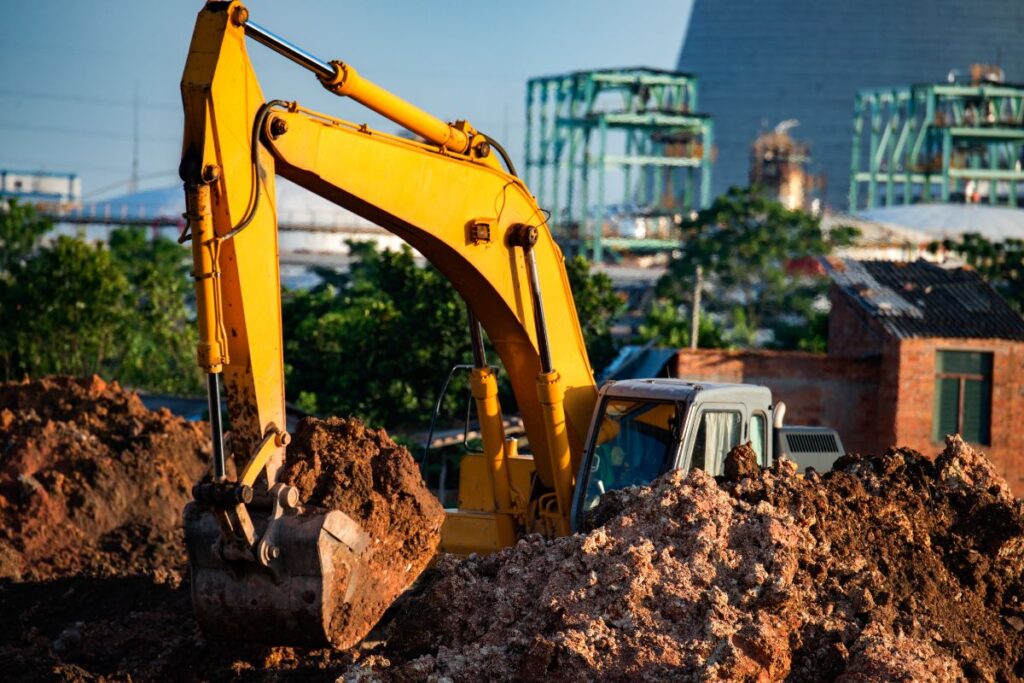Civil Construction
It is one of the most vital sectors in the development of modern civilization. It encompasses the design, construction, and maintenance of infrastructure projects that serve the public and form the backbone of urban and rural development. Roads, bridges, dams, airports, railways, water supply systems, and buildings are just a few examples of civil construction projects that play a critical role in economic growth, public health, safety, and overall quality of life.
Core Areas of Civil Construction
There are several key sectors within civil construction, each serving a different purpose in society:
- Transportation Infrastructure
Roads, bridges, tunnels, railways, airports, and seaports fall under this category. These projects are essential for connecting people, goods, and services, thus facilitating trade and mobility. - Water and Sewage Systems
Water treatment plants, drainage systems, dams, and pipelines ensure clean water supply and effective waste management, which are crucial for public health and environmental protection. - Structural Construction
This area includes the construction of buildings and facilities such as schools, office buildings, sports arenas, and hospitals. It combines architectural aesthetics with structural integrity. - Energy Infrastructure
Civil construction is also instrumental in developing infrastructure for energy production and distribution, including power plants, wind farms, and transmission lines. - Earthworks and Foundations
Earthmoving, excavation, grading, and foundation laying are preliminary but essential tasks in most civil construction projects, setting the groundwork for all other structures.
Phases of Civil Construction Projects
A civil construction project typically goes through several phases:
- Planning and Design
Engineers and architects work together to develop detailed plans that address the project’s goals, budget, environmental impact, and safety considerations. Surveys, soil testing, and feasibility studies are common during this stage. - Pre-Construction
This phase involves securing permits, selecting contractors, and setting project timelines. It’s also when construction materials are sourced and equipment is prepared. - Construction
The actual building process begins, involving site preparation, foundation work, structural construction, and finishing. Effective project management is essential to keep the project on time and within budget. - Post-Construction and Maintenance
Once completed, the infrastructure undergoes final inspections before being opened for use. Regular maintenance is critical to extend the lifespan and functionality of the project.
Technologies in Civil Construction
The civil construction industry has embraced various technological advancements to improve efficiency, accuracy, and safety:
- Building Information Modeling (BIM): A digital representation of the physical and functional characteristics of a structure, allowing for better planning and collaboration.
- Drones and Aerial Surveying: Used for topographical surveys, progress monitoring, and inspections.
- GPS and GIS Technologies: Assist in mapping, planning, and managing large infrastructure networks.
- Construction Robotics and Automation: Help in reducing manual labor, improving precision, and enhancing safety.
- Sustainable Materials and Green Construction: Focus on using eco-friendly materials and practices to reduce the environmental impact of construction.
Importance of Safety in Civil Construction
Civil construction involves heavy machinery, working at heights, and potentially hazardous environments, making safety a top priority. Adhering to safety regulations, providing proper training, and equipping workers with personal protective gear are essential for minimizing accidents and ensuring worker well-being.
Regulatory bodies often oversee construction standards to enforce safety and quality. In many countries, agencies like OSHA (Occupational Safety and Health Administration) in the U.S. or HSE (Health and Safety Executive) in the U.K. set industry benchmarks for safety.
Challenges in Civil Construction
Despite its importance, civil construction faces several challenges:
- Environmental Concerns: Construction projects can lead to deforestation, pollution, and habitat disruption if not managed responsibly.
- Urbanization Pressure: Rapid urban growth increases demand for infrastructure, sometimes outpacing planning and funding capabilities.
- Budget Constraints: Large-scale projects often face cost overruns and delays due to funding issues or unforeseen conditions.
- Skilled Labor Shortage: The industry often struggles to attract and retain skilled workers due to the physically demanding nature of the work.
Future of Civil Construction
The future of civil construction is being shaped by sustainability, smart technologies, and a growing focus on resilience. Green construction practices are becoming standard, with an emphasis on energy efficiency and reduced carbon footprints. Meanwhile, smart infrastructure—integrating sensors and data systems—is enabling better maintenance and real-time monitoring of structures.
Additionally, modular construction and 3D printing are revolutionizing how buildings and infrastructure are designed and constructed, promising faster delivery and reduced waste.
Conclusion
Civil construction is far more than just building structures—it is the foundation upon which societies grow and thrive. From the roads we travel to the water we drink, it touches nearly every aspect of our daily lives. As technology advances and the world’s population continues to grow, the civil construction industry will remain pivotal in meeting the needs of modern society while embracing sustainable and innovative practices.

